Broad shoulders are a hallmark of a strong and aesthetically pleasing physique. They not only enhance your posture and visual width, but also contribute to overall upper body strength and stability. Whether you’re a seasoned gym rat or just starting your fitness journey, sculpted shoulders are a worthy goal.
The best shoulder workouts of all time you can perform, hit your deltoids, upper trapezius, serratus anterior, rotator cuff muscles, and levator scapulae to truly build three-dimensional shoulders. Aside from strengthening your upper body muscles and the bones beneath them, you’ll safeguard your body against injury and, let’s face it, create the ultimate aesthetic too.
Overhead pressing and lateral raises can only do so much to build strong, functional shoulders—although they’re definitely in the top tier of muscle-building moves. Traveling or training outside of a gym? We’ve included some of the top shoulder workouts for men to do at home, as well as some machine-centric exercises.
These nine best exercises for wider shoulders are a great addition to your training if your aim is not only to grow your shoulders but also to get a V-taper upper body.
This shape, where the shoulders are visibly wider than the hips, should not be too hard to achieve if you add the right exercises into your training.
Max Posternak, behind the YouTube channel Gravity Transformation, goes over his best exercises for wider shoulders and includes training techniques on how to incorporate them into your routine to make your upper body bigger.
This article dives deep into the world of shoulder training, providing you with 9 top-notch exercises guaranteed to target all three heads of the deltoid (the main shoulder muscle) and create that coveted width.
The Deltoid: Understanding Your Shoulder Muscles
The deltoid is a triangular-shaped muscle group on the shoulder that plays a crucial role in various upper body movements. It consists of three distinct parts:
- Anterior deltoid (front delt): Responsible for shoulder flexion (lifting your arm upwards).
- Lateral deltoid (side delt): Key for shoulder abduction (raising your arms out to the sides).
- Posterior deltoid (rear delt): Plays a vital role in shoulder extension (pulling your arms back) and overall posture.

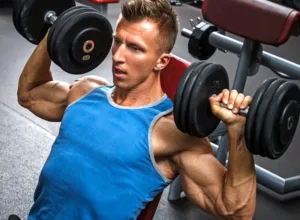 The Importance of Training All Three Deltoid Heads
The Importance of Training All Three Deltoid Heads
For well-developed shoulders, it’s crucial to train all three deltoid heads. Here’s why:
- Balanced Development: Focusing solely on one delt head can lead to muscle imbalances and potential injuries.
- Aesthetics: Training all three heads creates a well-rounded, broad shoulder appearance.
- Improved Functionality: Strong, balanced shoulders contribute to better posture, injury prevention, and overall upper body strength.
Building a Complete Shoulder Routine
Incorporate these exercises into a well-rounded shoulder workout routine. Aim for 2-3 shoulder workouts per week, with each session targeting all three deltoid heads. Here’s a sample routine:
Check Out Our List Of The Best Supplements For Building Muscle, Shredding Muscle, Recovery, And Great Health, and Wellness Products! Purchase ifbnewsfeed.org‘s apparels Here: ifbnewsfeed.org

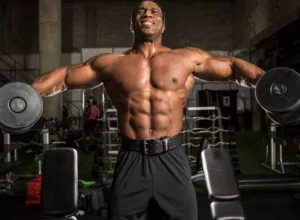 9 Best Exercises for Wider Shoulders
9 Best Exercises for Wider Shoulders
Before you try the exercises, remember that the shoulder has got three heads: anterior, lateral, and posterior. If you want to achieve shoulder width, you’ll want to primarily target the middle and back of the shoulder as many compound exercises you’re likely doing – such as the bench press – already target the front head.
- Lateral Raise
- Bent-Over Reverse Cable Fly
- Bent Arm Lateral Raise
- Reverse Dumbbell Fly
- Leaning Lateral Raise
- High Cable Reverse Fly
- Cable Lateral Raise (Straddle)
- Cable Crossover Lateral Raise
- Incline Lateral Raise
Lateral Raise
Lean slightly forward to target the middle head of the shoulder
Bent-Over Reverse Cable Fly
This exercise targets the posterior head of the shoulder
Bent Arm Lateral Raise
This exercise has many of the same benefits as the barbell row.
Reverse Dumbbell Fly
Make sure you keep your chest up and shoulder blades back to protect your lower back. The more you bent forward, the more you’ll isolate the posterior shoulder head.
Leaning Lateral Raise
This is one of the best exercises for wider shoulders as it helps work the body part in a way that’s just not possible with regular lateral raises.
High Cable Reverse Fly
This is a great exercise for the back of the shoulders.
Cable Lateral Raise (Straddle)
Place the cable between your legs to target the middle and back part of your shoulder more.
Cable Crossover Lateral Raise
Similar to the cable crossover, this variation doesn’t target the chest but the shoulders.
Incline Lateral Raise
Use a bench set at an incline between 60 and 70 degrees.

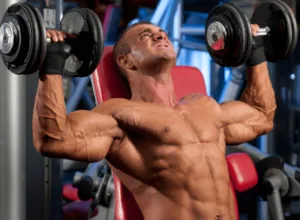 Additional Top 9 Exercises for Broader Shoulders
Additional Top 9 Exercises for Broader Shoulders
-
Military Press: This classic exercise is a compound movement that works all three shoulder heads simultaneously. You can perform it with dumbbells or a barbell, standing or seated.
-
Arnold Press: A variation of the military press, the Arnold press incorporates a twisting motion that emphasizes the lateral deltoid. Hold dumbbells and rotate your palms upwards as you press the weights overhead.
-
Lateral Raise: This isolation exercise specifically targets the lateral deltoid. Hold dumbbells with your palms facing down and raise your arms out to the sides until your elbows are slightly higher than your shoulders.
-
Front Raise: Another isolation movement that focuses on the anterior deltoid. Hold dumbbells with palms facing forward and raise your arms straight out in front of you until they are parallel to the ground.
-
Rear Delt Fly: Don’t neglect the rear deltoid! This exercise can be done with dumbbells or cables. Lean forward slightly and raise your arms back with a slight bend in the elbow, squeezing your shoulder blades together at the top.
-
Face Pull: This unique exercise strengthens the rotator cuff muscles that support the shoulder joint and indirectly contributes to broader shoulders. Sit facing a cable machine and pull the cable attachment towards your face, keeping your elbows high and close to your head.
-
Handstand Push-Up (Advanced): This advanced exercise is a fantastic way to build overall shoulder strength and stability. It requires significant core engagement and works multiple muscle groups, including the anterior deltoid.
-
Pike Push-Up: A great progression towards the handstand push-up, the pike push-up strengthens the shoulders while placing less stress on the wrists. Place your hands shoulder-width apart on the floor and walk your feet closer to your body, forming an inverted V with your body. Lower your chest towards the ground, keeping your core engaged.
-
Y-T Raise: This exercise hits both the anterior and posterior deltoids. Lie face down on a bench with dumbbells in each hand. Raise your arms out to the sides and upwards, forming a Y shape with your body. Squeeze your shoulder blades together at the top and slowly lower back down.
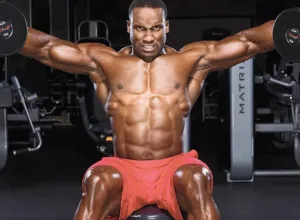
 Add these exercises to your workouts
Add these exercises to your workouts
These 9 exercises for wider shoulders will provide you with at least two workouts that you can then add to your training routine.
Choose between 4 and 5 exercises, using a challenging weight, and perform 3 sets of around 10 reps of each exercise per set.
If you want more shoulder exercises, add the Dumbbell Shoulder Press, Arnold Press, or Military Press to your training.
Read more: The 8 Best Exercises for a Wider Back
Maximizing Your Shoulder Workouts
- Warm-up: Before any workout, perform dynamic stretches to prepare your shoulders for the exercises ahead. This helps to improve flexibility and prevent injuries.
- Mind-Muscle Connection: Focus on feeling the targeted muscle group working throughout each exercise. This helps you maintain proper form and maximize muscle activation.
- Progressive Overload: Gradually increase the weight, sets, or reps over time to keep challenging your muscles and promote growth.
- Rest and Recovery: Allow your shoulders adequate rest between workouts to repair and rebuild muscle tissue. Aim for 48-72 hours of recovery between shoulder-focused training sessions.
Wrapping Up
Broad shoulders are a hallmark of a strong, athletic physique. They not only enhance your appearance with a V-shaped taper, but also improve posture, stability, and overall upper body strength. But building impressive shoulders takes dedication and a strategic workout plan.
More About Shoulder exercises Contents
- Learn On How “To Build Massive Muscle Mass” For Your Shoulders With These Great Tips
- Learn On How “To Get Wider Broader Shoulders” With These 9 Insane Exercises
- How to Get Bigger Shoulders: Here Are The Best “Shoulder Exercises” And “Workouts” For Ultimate Delts Explosion
- Deltoids Development: Build Boulder Shoulders With These “5 Exercises”
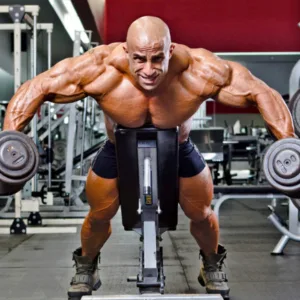
- Get $200 With Your 1st Order Because Your Health Matters
- Best Supplements For Muscle Building, Strength & Champion Performance
- Best Supplements For Intense Energy, Performance & Endurance
For More News And Daily Updates, Follow IFBNewsfeed.Org™🇺🇸 on Facebook, Twitter, and Instagram. Comment, Like, And Share With Everyone Who May Need To Be Updated With The Most Recent Fitness/Bodybuilding/Powerlifting And CrossFit News.







